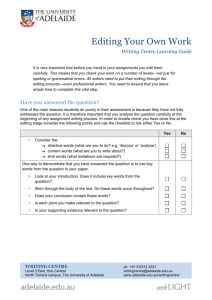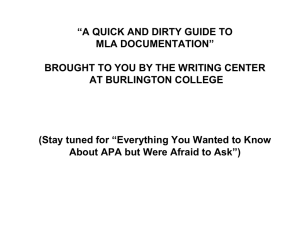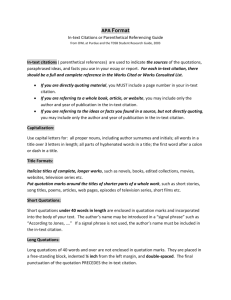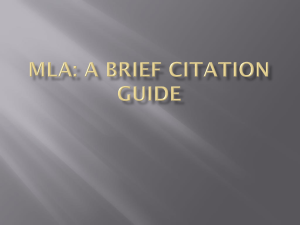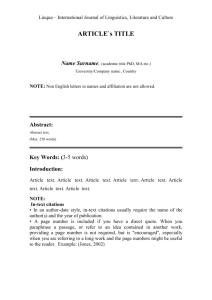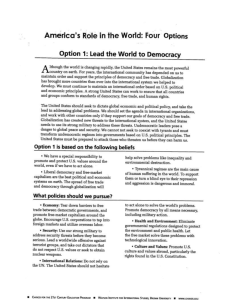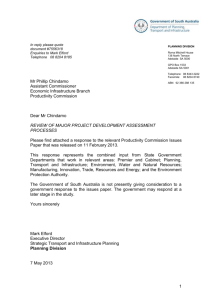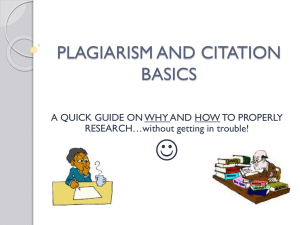Referencing Comparison Sheet
advertisement
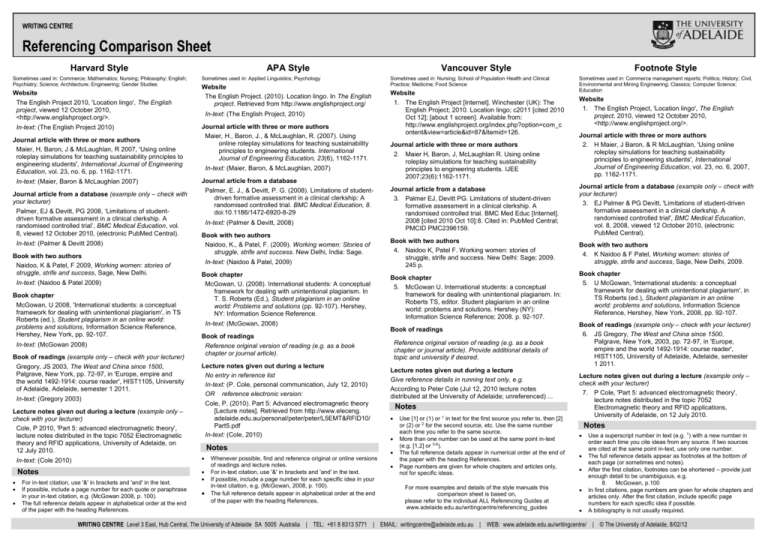
WRITING CENTRE Referencing Comparison Sheet Harvard Style Sometimes used in: Commerce; Mathematics; Nursing; Philosophy; English; Psychiatry; Science; Architecture; Engineering; Gender Studies Website The English Project 2010, 'Location lingo', The English project, viewed 12 October 2010, <http://www.englishproject.org/>. In-text: (The English Project 2010) Journal article with three or more authors Maier, H, Baron, J & McLaughlan, R 2007, 'Using online roleplay simulations for teaching sustainability principles to engineering students', International Journal of Engineering Education, vol. 23, no. 6, pp. 1162-1171. In-text: (Maier, Baron & McLaughlan 2007) Journal article from a database (example only – check with your lecturer) Palmer, EJ & Devitt, PG 2008, ‘Limitations of studentdriven formative assessment in a clinical clerkship. A randomised controlled trial’, BMC Medical Education, vol. 8, viewed 12 October 2010, (electronic PubMed Central). In-text: (Palmer & Devitt 2008) Book with two authors Naidoo, K & Patel, F 2009, Working women: stories of struggle, strife and success, Sage, New Delhi. In-text: (Naidoo & Patel 2009) Book chapter McGowan, U 2008, 'International students: a conceptual framework for dealing with unintentional plagiarism', in TS Roberts (ed.), Student plagiarism in an online world: problems and solutions, Information Science Reference, Hershey, New York, pp. 92-107. In-text: (McGowan 2008) Book of readings (example only – check with your lecturer) Gregory, JS 2003, The West and China since 1500, Palgrave, New York, pp. 72-97, in 'Europe, empire and the world 1492-1914: course reader', HIST1105, University of Adelaide, Adelaide, semester 1 2011. In-text: (Gregory 2003) Lecture notes given out during a lecture (example only – check with your lecturer) Cole, P 2010, 'Part 5: advanced electromagnetic theory', lecture notes distributed in the topic 7052 Electromagnetic theory and RFID applications, University of Adelaide, on 12 July 2010. Notes Sometimes used in: Applied Linguistics; Psychology Website The English Project. (2010). Location lingo. In The English project. Retrieved from http://www.englishproject.org/ In-text: (The English Project, 2010) Journal article with three or more authors Maier, H., Baron, J., & McLaughlan, R. (2007). Using online roleplay simulations for teaching sustainability principles to engineering students. International Journal of Engineering Education, 23(6), 1162-1171. In-text: (Maier, Baron, & McLaughlan, 2007) Journal article from a database Palmer, E. J., & Devitt, P. G. (2008). Limitations of studentdriven formative assessment in a clinical clerkship: A randomised controlled trial. BMC Medical Education, 8. doi:10.1186/1472-6920-8-29 In-text: (Palmer & Devitt, 2008) Book with two authors Naidoo, K., & Patel, F. (2009). Working women: Stories of struggle, strife and success. New Delhi, India: Sage. In-text: (Naidoo & Patel, 2009) Book chapter McGowan, U. (2008). International students: A conceptual framework for dealing with unintentional plagiarism. In T. S. Roberts (Ed.), Student plagiarism in an online world: Problems and solutions (pp. 92-107). Hershey, NY: Information Science Reference. In-text: (McGowan, 2008) For in-text citation, use '&' in brackets and 'and' in the text. If possible, include a page number for each quote or paraphrase in your in-text citation, e.g. (McGowan 2008, p. 100). The full reference details appear in alphabetical order at the end of the paper with the heading References. Vancouver Style Sometimes used in: Nursing; School of Population Health and Clinical Practice; Medicine; Food Science Website 1. The English Project [Internet]. Winchester (UK): The English Project; 2010. Location lingo; c2011 [cited 2010 Oct 12]; [about 1 screen]. Available from: http://www.englishproject.org/index.php?option=com_c ontent&view=article&id=87&Itemid=126. Journal article with three or more authors 2. Maier H, Baron, J, McLaughlan R. Using online roleplay simulations for teaching sustainability principles to engineering students. IJEE 2007;23(6):1162-1171. Lecture notes given out during a lecture No entry in reference list In-text: (P. Cole, personal communication, July 12, 2010) OR reference electronic version: Cole, P. (2010). Part 5: Advanced electromagnetic theory [Lecture notes]. Retrieved from http://www.eleceng. adelaide.edu.au/personal/peter/peter/L5EMT&RFID10/ Part5.pdf In-text: (Cole, 2010) Notes Whenever possible, find and reference original or online versions of readings and lecture notes. For in-text citation, use '&' in brackets and 'and' in the text. If possible, include a page number for each specific idea in your in-text citation, e.g. (McGowan, 2008, p. 100). The full reference details appear in alphabetical order at the end of the paper with the heading References. Footnote Style Sometimes used in: Commerce management reports; Politics; History; Civil, Environmental and Mining Engineering; Classics; Computer Science; Education Website 1. The English Project, 'Location lingo', The English project, 2010, viewed 12 October 2010, <http://www.englishproject.org/>. Journal article with three or more authors 2. H Maier, J Baron, & R McLaughlan, 'Using online roleplay simulations for teaching sustainability principles to engineering students', International Journal of Engineering Education, vol. 23, no. 6, 2007, pp. 1162-1171. Journal article from a database 3. Palmer EJ, Devitt PG. Limitations of student-driven formative assessment in a clinical clerkship. A randomised controlled trial. BMC Med Educ [Internet]. 2008 [cited 2010 Oct 10]:8. Cited in: PubMed Central; PMCID PMC2396159. Journal article from a database (example only – check with your lecturer) 3. EJ Palmer & PG Devitt, 'Limitations of student-driven formative assessment in a clinical clerkship. A randomised controlled trial', BMC Medical Education, vol. 8, 2008, viewed 12 October 2010, (electronic PubMed Central). Book with two authors 4. Naidoo K, Patel F. Working women: stories of struggle, strife and success. New Delhi: Sage; 2009. 245 p. Book with two authors 4. K Naidoo & F Patel, Working women: stories of struggle, strife and success, Sage, New Delhi, 2009. Book chapter 5. McGowan U. International students: a conceptual framework for dealing with unintentional plagiarism. In: Roberts TS, editor. Student plagiarism in an online world: problems and solutions. Hershey (NY): Information Science Reference; 2008. p. 92-107. Book of readings Book of readings Reference original version of reading (e.g. as a book chapter or journal article). In-text: (Cole 2010) APA Style Reference original version of reading (e.g. as a book chapter or journal article). Provide additional details of topic and university if desired. Lecture notes given out during a lecture Give reference details in running text only, e.g. According to Peter Cole (Jul 12, 2010 lecture notes distributed at the University of Adelaide; unreferenced) ... Notes Use [1] or (1) or 1 in text for the first source you refer to, then [2] or (2) or 2 for the second source, etc. Use the same number each time you refer to the same source. More than one number can be used at the same point in-text (e.g. [1,2] or 3-6). The full reference details appear in numerical order at the end of the paper with the heading References. Page numbers are given for whole chapters and articles only, not for specific ideas. For more examples and details of the style manuals this comparison sheet is based on, please refer to the individual ALL Referencing Guides at www.adelaide.edu.au/writingcentre/referencing_guides Book chapter 5. U McGowan, 'International students: a conceptual framework for dealing with unintentional plagiarism', in TS Roberts (ed.), Student plagiarism in an online world: problems and solutions, Information Science Reference, Hershey, New York, 2008, pp. 92-107. Book of readings (example only – check with your lecturer) 6. JS Gregory, The West and China since 1500, Palgrave, New York, 2003, pp. 72-97, in 'Europe, empire and the world 1492-1914: course reader', HIST1105, University of Adelaide, Adelaide, semester 1 2011. Lecture notes given out during a lecture (example only – check with your lecturer) 7. P Cole, 'Part 5: advanced electromagnetic theory', lecture notes distributed in the topic 7052 Electromagnetic theory and RFID applications, University of Adelaide, on 12 July 2010. Notes Use a superscript number in text (e.g. 1) with a new number in order each time you cite ideas from any source. If two sources are cited at the same point in-text, use only one number. The full reference details appear as footnotes at the bottom of each page (or sometimes end notes). After the first citation, footnotes can be shortened – provide just enough detail to be unambiguous, e.g. 8. McGowan, p.100 In first citations, page numbers are given for whole chapters and articles only. After the first citation, include specific page numbers for each specific idea if possible. A bibliography is not usually required. WRITING CENTRE Level 3 East, Hub Central, The University of Adelaide SA 5005 Australia | TEL: +61 8 8313 5771 | EMAIL: writingcentre@adelaide.edu.au | WEB: www.adelaide.edu.au/writingcentre/ | © The University of Adelaide, 8/02/12
